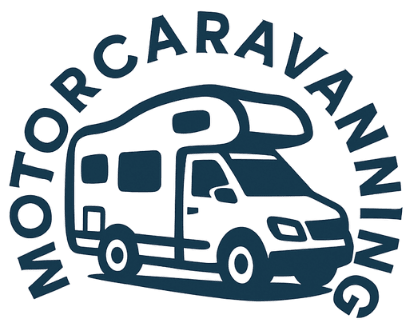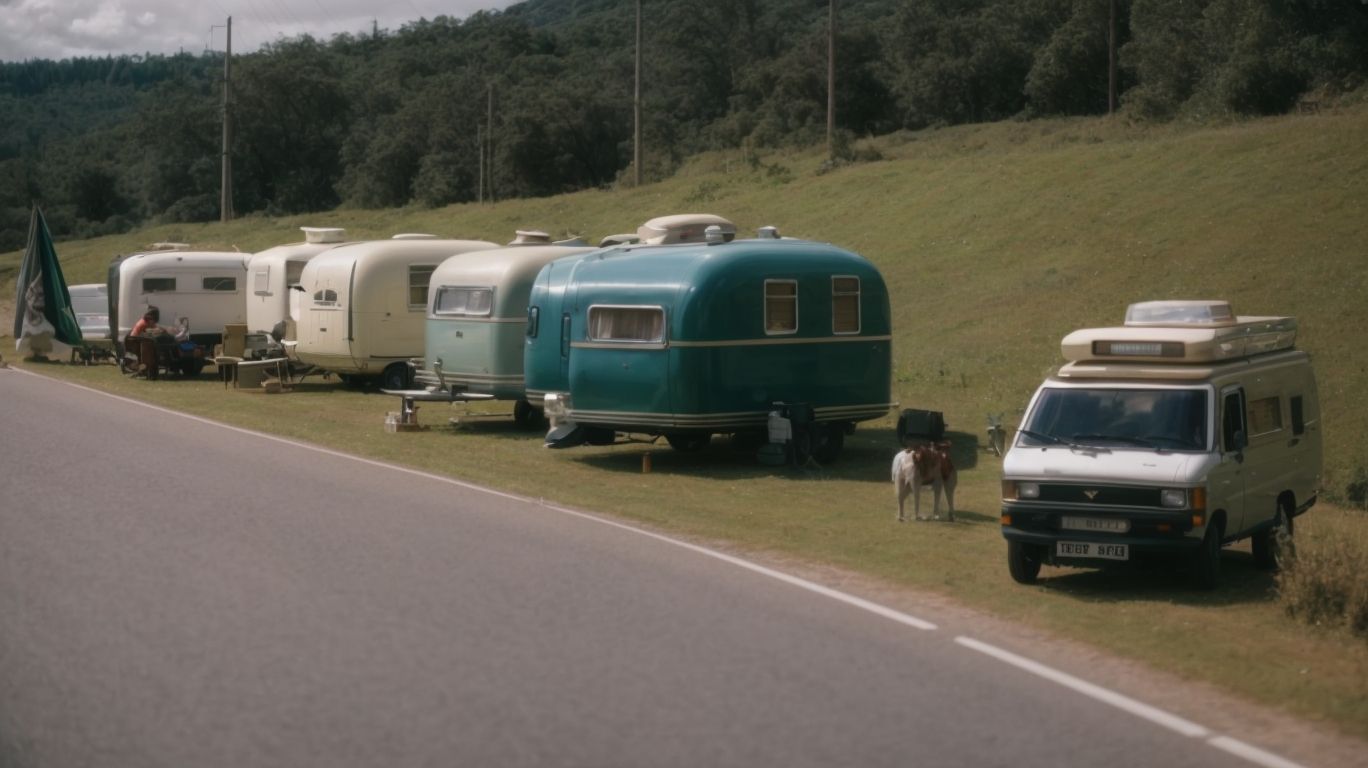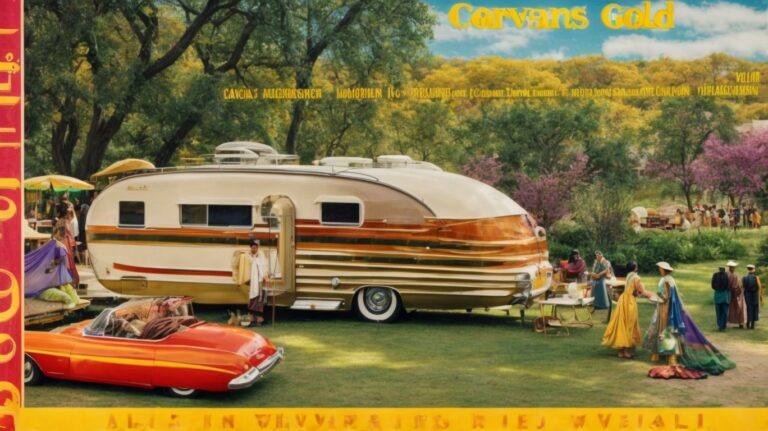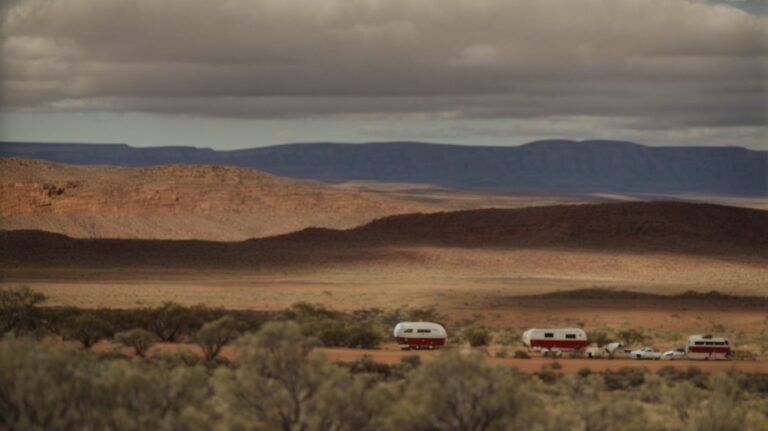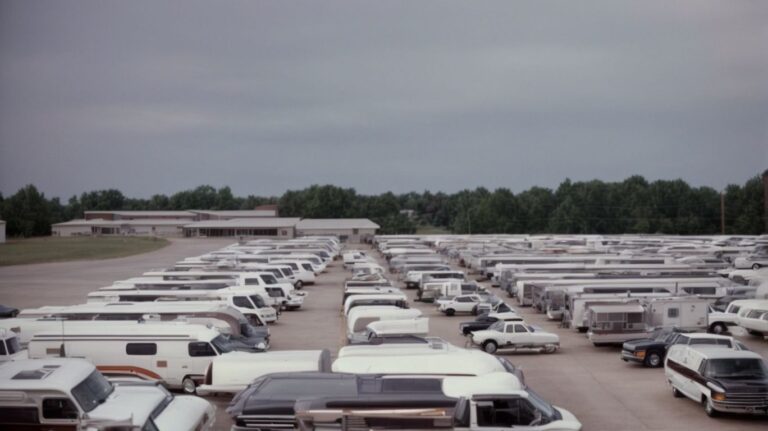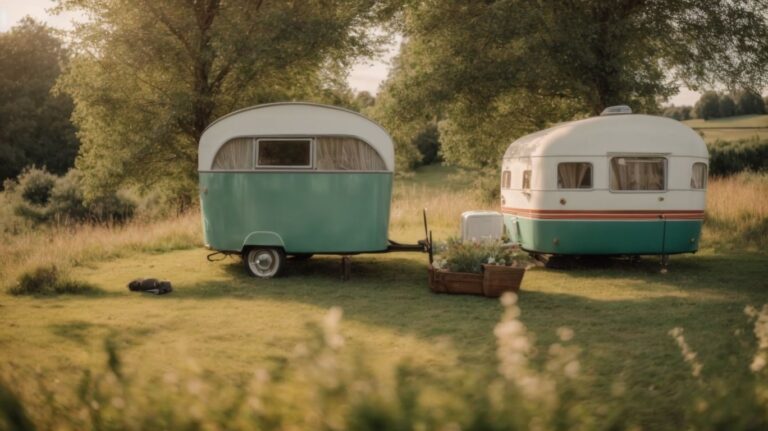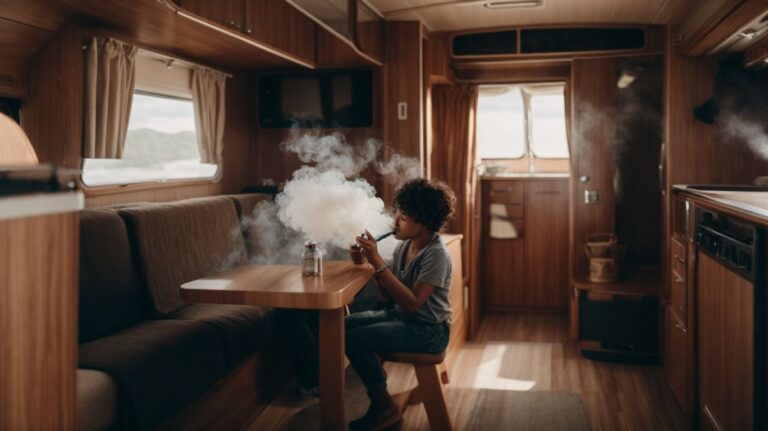Choosing the Right CB Channel for Caravans
If you’re a caravan enthusiast, you know that communication is key when traveling in a convoy. One of the most common ways to stay connected on the road is through CB channels. But with so many channels to choose from, how do you know which one is the right one for your caravan?
In this article, we’ll explore the importance of selecting the correct CB channel, how to make the best choice for your location and communication needs, best practices for using CB channels effectively, and alternative communication options for caravans.
Let’s dive in and ensure you’re staying connected on the road!
Key Takeaways:
What Is a CB Channel?
A CB channel, short for Citizens Band channel, is a designated frequency range on which users of CB radios can communicate with each other.
These channels are crucial for enabling effective and organized communication among CB radio enthusiasts, such as truckers, emergency responders, and hobbyists, to exchange information, request assistance, or simply engage in casual conversations.
There are several types of CB channels, including standard channels, emergency channels, data channels, and weather channels, each serving distinct purposes.
Choosing the appropriate channel is essential for clear and efficient communication. Factors like the nature of the communication, location, and potential interference need to be considered to ensure successful interaction between users.
Why Is Choosing the Right CB Channel Important for Caravans?
Motion Activated RV Step Lights, 10 LED Battery Operated Motorhome Motion Sensor led Light Strip, Magnetic Night Light Bar for Motorhome Travel,Travel Trailers, Camper (2 Pack)
- 【Infrared Induction Motion Detection】Motion sensor light on the PIR sensor can detect human movement, 10 feet once your approach is detected, the rv step lights will automatically turn on in the dark, in the absence of detected motion or other light sources, 18 seconds after the automatic shutdown, a large degree of power savings and improved durability.
Camco TST MAX RV Toilet Treatment Drop-INs - Control Unwanted Odors & Break Down Waste and Tissue - Safe Septic Tank Treatment - Orange Scent, 30-Pack (41183)
- Toilet Deodorizer With Reactive Odor-Eliminating Technology: Experience a powerful RV odor eliminator that stops RV black tank odors for up to 7 days. Just (1) toilet drop in treats camper toilets with up to a 40-gallon tank.
THANSTAR Collapsible Dish Drying Rack Portable Dinnerware Drainer Organizer for Kitchen RV Campers Travel Trailer Space Saving Kitchen Storage Tray
- 【Food Grade Material】Made from eco-friendly PP+TPR material that is BPA Free and Food-Grade. The flexible material allows the dish strainers for kitchen counter to collapse flat for easy space-saving and storage, making the most of your kitchen countertop.
Camco RhinoFLEX 20-Ft RV Sewer Hose Kit - Features Clear Elbow Fitting w/Removable 4-in-1 Adapter - Connects to 3” Slip or 3”/3.5”/4” NPT Threaded Sewer Connection (39742)
- Superior RV Tank Dumping: Streamline RV holding tank dumping with Camco’s RhinoFLEX 20' Camper Sewer Hose Kit. Built tough & flexible, this all-inclusive RV septic hose system provides simple & effective tank dumping on your camping adventures.
Camco Tastepure RV Water Filter - New & Advanced RV Inline Water Filter with Flexible Hose Protector - GAC & KDF Water Filter - Made in USA - Camping Essentials for Fresh Drinking Water (40043)
- Advanced 6-Step Filtration Technology: Experience the extraordinary power of Hex-Flow Technology & its remarkable 6-step filtration process. Every layer works together to provide you with water that is exceptionally clean.





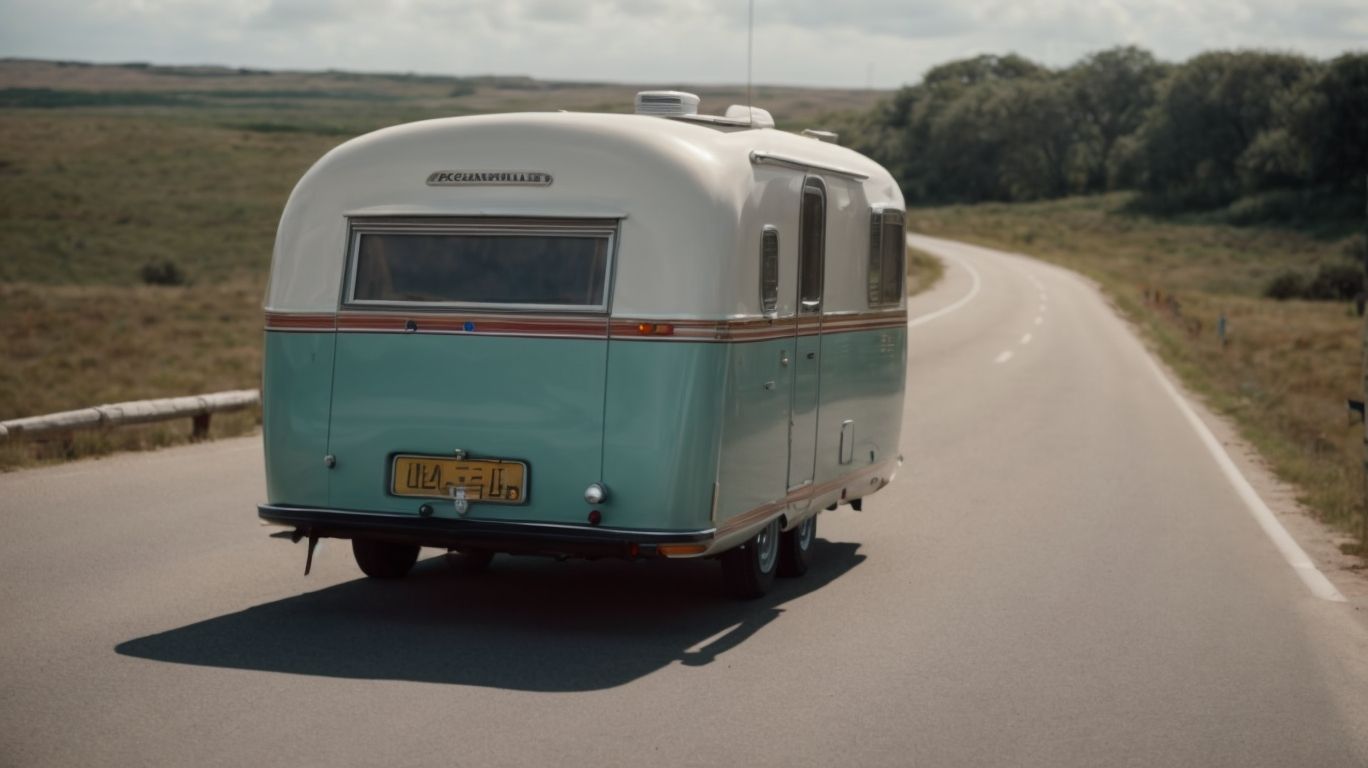
Credits: Motorcaravanning.Com – James Nguyen
Selecting the correct CB channel is crucial for caravans using CB radios like the Midland 88, as it ensures efficient communication among travelers, enhances safety on the road, and fosters clear conversations between users.
When caravanning, choosing the right CB channel can be likened to picking the right frequency for a radio station – it sets the tone for seamless communication throughout the journey. By designating specific channels for different purposes, such as emergencies, general chatter, or traffic updates, caravan groups can easily coordinate their travel plans and stay connected, especially in remote areas with limited cellular coverage.
The utilization of antennas in conjunction with the selected CB channel is key to optimizing signal transmission. Antennas extend the range and quality of communication, allowing caravan members to stay in touch over longer distances and varying terrain. This integration of channels and antennas not only improves overall safety by keeping everyone informed but also fosters a sense of camaraderie and teamwork among travelers.
How Many CB Channels Are There?
The CB radio spectrum offers a total of 40 channels for communication, including the National General Purpose (NGP) channels commonly used by caravan travelers.
These 40 channels provide a wide range of frequencies for caravaners to communicate effectively during their journeys, with the NGP channels being particularly vital due to their designated purpose.
Accessing these channels requires a CB radio transceiver, preferably one with multiple channels and adjustable power settings to ensure clear reception and transmission. A good antenna is also essential to enhance signal strength, especially in remote areas.
Having a basic understanding of channel etiquette and protocols is crucial to prevent interference and maintain efficient communication within the caravan community.
What Are the Most Common CB Channels Used for Caravans?
Among the various CB channels, truckers, RV owners, and convoy travelers frequently rely on specific channels, such as UHF radio frequencies, to communicate important information, share road hazards, and coordinate their journeys.





Truckers gravitate towards Channel 19 which is recognized as the ‘trucker channel’, serving as a hub for traffic updates, weather conditions, and other vital announcements in the trucking community.
RV enthusiasts often tune in to Channel 13 for traveler-friendly discussions, campground recommendations, and RV maintenance tips.
Convoy groups often opt for Channel 17 for seamless coordination, real-time traffic updates, and emergency assistance. These channels foster a sense of community and safety among caravan travelers, allowing them to navigate the roads with enhanced communication and support.
How to Choose the Right CB Channel for Your Caravan?
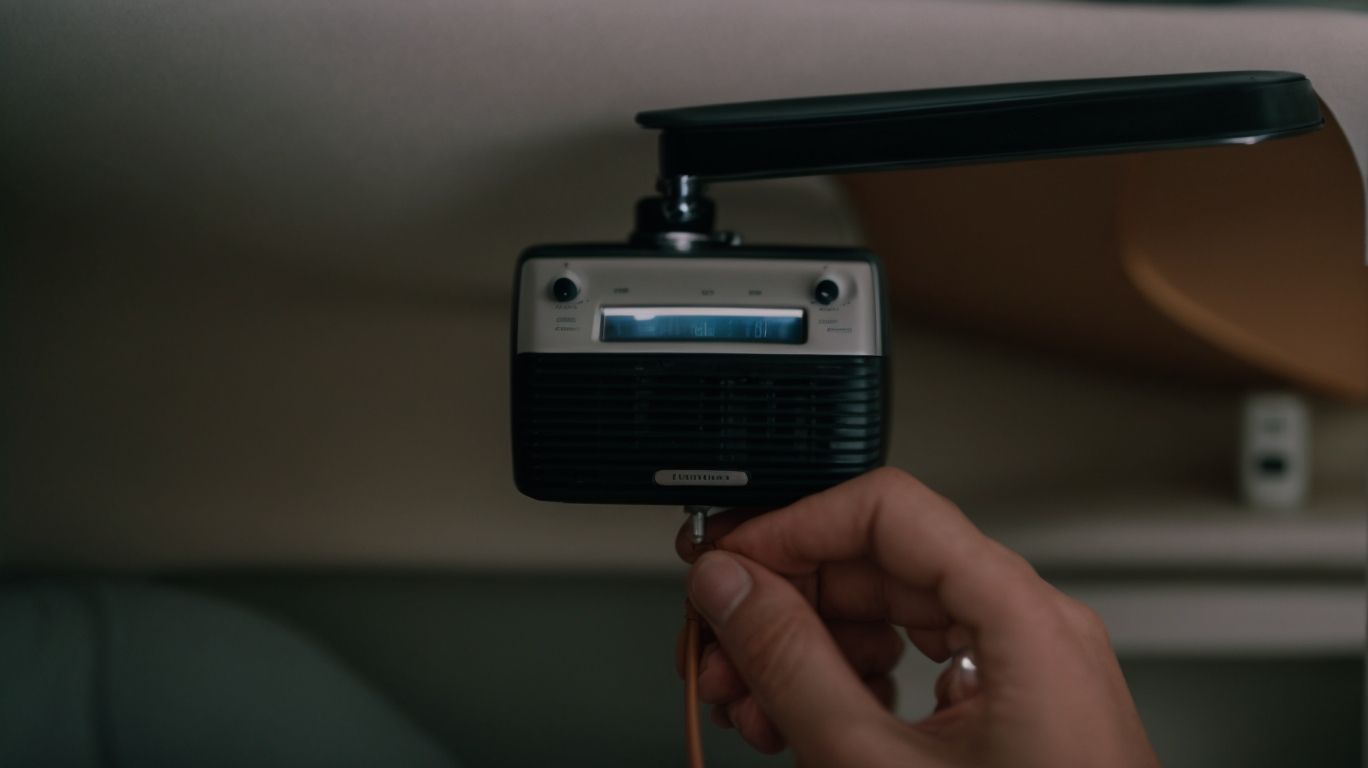
Credits: Motorcaravanning.Com – Raymond Young
Selecting the appropriate CB channel for your caravan involves considering factors such as the communication needs of travelers, the type of vehicle being used, and the frequency range that best suits your intended communication range.
Traveler requirements play a crucial role in this selection process as different groups may have distinct needs, such as emergency communication, group coordination, or general updates on road conditions. Ensuring that the chosen CB channel aligns with these requirements can significantly enhance the overall caravan experience.
Vehicle compatibility is another vital aspect to take into account. Various CB radios may be optimized for specific vehicle types or sizes, hence selecting a channel that is compatible with your caravan’s setup can improve signal strength and clarity.
When assessing frequency considerations, it’s essential to match the channel frequency with the terrain and distance of communication. Opting for a frequency range that offers robust coverage within the caravan’s planned route can avoid signal disruptions and ensure consistent and reliable communication throughout the journey.





Consider Your Location
When choosing a CB channel for your caravan, consider your current location and terrain to determine the optimal placement of antennas on your vehicle or pickup for enhanced signal reception and transmission.
Location-based considerations play a crucial role in ensuring effective communication through CB channels. The geographical features and structures surrounding you can greatly impact signal quality. For example, dense forests or tall buildings can obstruct signals, while open plains or elevated locations can allow for better transmission.
Antenna placement and installation are key factors in maximizing the range and clarity of your communications. On a vehicle, mounting the antenna at the highest point, such as the roof or hood, can significantly improve signal strength. For larger vehicles like caravans or trucks, utilizing a ground plane antenna on the roof can offer better omnidirectional coverage.
Optimizing signal strength based on terrain involves understanding the topography and obstacles present in your surroundings. In mountainous areas, signal reflections and blockages can be common challenges, requiring adjustments in antenna placement or using signal boosters to overcome such hurdles.
Check for Interference
Before finalizing your CB channel choice, ensure to check for potential interference from other users or emergency channels to guarantee uninterrupted communication and swift access to emergency services when needed.
Interference issues can significantly impact the effectiveness of your CB communication during crucial moments. Competing signals from other users or emergency channels can cause disruptions or even result in missed messages, potentially jeopardizing your ability to receive or send important information. It is essential to establish clear communication pathways to ensure that emergency calls are not delayed or obstructed by interference. By addressing these issues preemptively, you can enhance the reliability of your CB radio system and maintain operational readiness at all times.
Look for Channels with Minimal Traffic
Choosing CB channels with minimal traffic is advisable for caravan communication, especially during inclement weather, as it ensures that vital information can be shared without interruptions or delays.
When caravaning, the last thing you want is to get caught up in a network cluttered with unnecessary chatter, reducing the clarity and urgency of your communication. Opting for channels that experience low user traffic can significantly enhance the effectiveness of your conversations.
Clear communication is crucial for staying informed and ensuring the safety of all members in the caravan. By selecting quieter channels, you minimize the chances of interference, making it easier to convey important messages swiftly and accurately.
Consider the Type of Communication You Need
When deciding on a CB channel, consider the specific communication requirements of your caravan travelers, the features offered by your vehicle’s communication system, and the intended scope of your interactions to select a channel that aligns with your needs.





For caravan travelers, the choice of CB channel can significantly impact the efficiency and effectiveness of their communications. Assessing the needs of the travelers, such as the size of the convoy, the terrain they will be traversing, and the range over which communication is required, is essential in determining the most suitable channel.
Customizing communication channels based on these factors can enhance safety, coordination, and overall travel experience. Understanding the capabilities of your vehicle’s communication system, including its reach, power, and compatibility with different frequencies, is paramount in ensuring seamless communication while on the road.
What Are the Best Practices for Using CB Channels for Caravans?
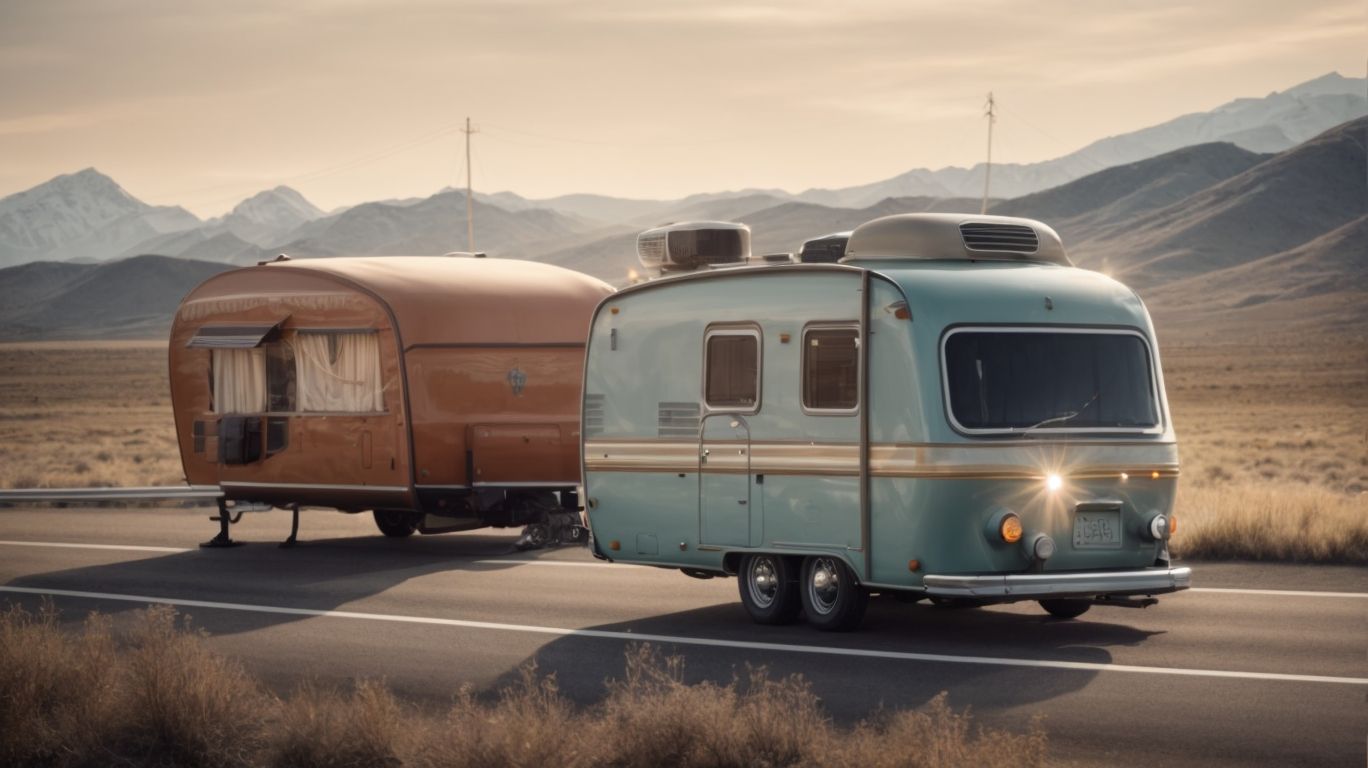
Credits: Motorcaravanning.Com – Mason Young
Adhering to best practices for CB channel usage in caravans involves maintaining clear communication to convey road hazards, coordinating driver and passenger interactions effectively, optimizing pickup and transmission quality, and ensuring proper antenna functionality.
Ensuring a smooth flow of communication is vital to keep everyone informed and safe during the caravan journey. Not only does this help in sharing timely updates about any potential dangers on the road, but it also fosters a sense of unity among drivers and passengers. Maximizing the efficiency of CB channels requires drivers and passengers to be well-versed in proper radio etiquette, such as using standardized codes and clear language.
Follow CB Radio Etiquette
Observing proper CB radio etiquette is essential for truckies and caravan travelers alike, ensuring respectful and efficient communication that leverages the key features of CB radios for effective information exchange.
CB radio etiquette plays a crucial role in caravan communication, facilitating smooth and organized interactions among users. By adhering to established norms, individuals can avoid misunderstandings, conflicts, or disruptions in communication. Specific features of CB radios, such as the ‘push-to-talk’ button and channel selection, support etiquette compliance by enabling users to take turns speaking and choose the most suitable channel for their messages.
For instance, using proper greetings like ‘breaker breaker’ to initiate communication and signing off with ‘over and out’ to indicate the end of a transmission are common etiquette practices that enhance clarity and professionalism. Showing consideration for other users by keeping transmissions concise, avoiding unnecessary interruptions, and staying attentive to incoming messages fosters a harmonious atmosphere on the CB radio network.





Keep Communication Clear and Concise
Maintaining clear and concise communication among caravan travelers on CB channels is paramount for ensuring safety, efficiency, and effective conversation flow, fostering a secure and collaborative travel experience.
When navigating through diverse terrains or encountering unexpected road conditions, the ability to relay crucial information swiftly and accurately can be a lifesaver. Utilizing established CB etiquette, such as using clear language and avoiding unnecessary chatter, ensures that messages are relayed promptly and efficiently.
Optimizing communication efficiency involves keeping transmissions brief yet informative, using standardized codes when applicable to convey essential details swiftly. To avoid confusion and misunderstandings, strategize pre-set call signs or designated channels for specific caravan functions, enabling seamless coordination and swift responses in emergencies.
Use Codes and Signals for Better Communication
Leveraging codes and signals on CB channels can enhance communication efficiency and clarity among caravan travelers, enabling quick message delivery, precise frequency usage, and effective information relay.
Standardized communication protocols help in ensuring that messages are transmitted accurately and received clearly, reducing the chances of misunderstandings or errors during critical communications.
- For instance, using a specific set of codes such as ’10-codes’ can streamline common interactions like requesting assistance, reporting hazards, or coordinating plans without confusion.
- In emergency situations, predefined distress signals like ‘SOS’ can swiftly convey the severity of the situation, prompting immediate response from fellow travelers or authorities.
Keep the CB Radio On and Tuned to the Right Channel
Ensuring that the CB radio remains powered on and tuned to the appropriate channel during caravan travel is essential for immediate access to communication resources, emergency assistance, and real-time information sharing among travelers.
Caravans often traverse remote and isolated regions, making it crucial to have a reliable means of communication. If there is an emergency or unforeseen circumstances, a properly functioning CB radio can be a lifesaver.
- Emergency channel readiness is paramount, as it ensures that help can be summoned swiftly when needed. Familiarizing oneself with the emergency channel frequencies and keeping the radio set to those frequencies can make a significant difference during critical moments.
- To maintain seamless communication and travel coordination, it is vital to regularly check the radio to ensure it is set to the correct channel. Creating a routine to verify the channel settings prior to each journey leg can prevent miscommunication and enhance overall safety.
What Are the Alternatives to CB Channels for Caravans?
Along with CB channels, caravan travelers can explore alternative communication options such as FRS/GMRS Radios, Ham Radios, and Cell Phones to maintain connectivity, enhance communication range, and expand communication capabilities beyond traditional CB radio channels.
FRS/GMRS Radios are popular for caravan communication due to their wider coverage compared to CB channels, with some models offering up to 20 miles of range in open areas. They are user-friendly, compact, and easy to carry, making them ideal for mobile communication needs.
Ham Radios, on the other hand, provide long-distance communication capabilities and can be used to reach out to emergency services or other caravans over vast distances. Although more complex to operate, they offer unmatched range and signal clarity.





Cell Phones, while not dedicated communication devices like radios, are integral for caravan communication due to their versatility. Beyond making regular calls, modern smartphones can leverage apps, messaging services, and GPS functionalities to stay connected and share location information with fellow travelers, enhancing safety and coordination within the caravan.
FRS/GMRS Radios
FRS/GMRS Radios offer caravan travelers an alternative communication solution to traditional CB radios, providing additional features, extended range capabilities, and compatibility with NGP channels for enhanced communication flexibility.
One of the key advantages of utilizing FRS/GMRS Radios is their ease of use and compact design, making them ideal for on-the-go communication within caravan groups. These radios typically have multiple channels and privacy codes, allowing users to find a clear and interference-free frequency for communication. The extended range capabilities of FRS/GMRS radios enable caravan travelers to stay in contact over longer distances, even in remote areas. Their compatibility with NGP channels further enhances communication options, ensuring seamless connectivity with other radio systems.”
Ham Radios
Ham Radios present a valuable communication alternative for caravan travelers, offering advanced features, emergency communication capabilities, and direct communication channels, supplementing traditional CB radio usage for enhanced connectivity and emergency readiness.
One of the key benefits of integrating Ham Radios into caravan communication setups is the broader range they offer compared to CB radios, allowing travelers to stay connected over greater distances. Ham Radios provide more reliable communication in remote areas where standard mobile networks may not reach, ensuring constant contact with fellow caravan members or emergency services.
The emergency communication functionalities of Ham Radios are noteworthy, as they enable travelers to access various frequencies designated for emergency and distress signals, providing a crucial lifeline in urgent situations. The direct communication benefits of Ham Radios allow for private conversations between caravan members, fostering closer coordination and streamlined decision-making during group travels.
Cell Phones
Cell Phones emerge as modern communication tools that offer caravan travelers an effective means of communication during their journeys, providing versatile communication options, weather updates, extended ranges, and varied frequency usage to augment existing CB radio setups.
Caravans, which often traverse diverse terrains and encounter unpredictable weather conditions, can greatly benefit from the adaptability of cell phones. Unlike traditional CB radios, cell phones are not hindered by atmospheric interferences and can maintain clear communication channels in various meteorological situations.
The extended communication ranges of cell phones come into play when caravans spread out along the road, enabling continuous contact between travelers even when they are miles apart. This enhanced connectivity fosters better coordination, emergency response, and overall safety throughout the caravan journey.





Frequently Asked Questions
What is the importance of choosing the right CB channel for caravans?
Choosing the right CB (Citizens Band) channel for caravans is crucial for effective communication between caravans on the road. It allows for clear and reliable communication, ensuring the safety and convenience of all drivers.
What factors should I consider when choosing a CB channel for caravans?
The most important factors to consider are the distance between caravans, weather conditions, and potential obstacles or interference. It is also important to consider the channel’s frequency and its popularity among other caravans.
How do I determine the best CB channel for my caravan?
The best way to determine the best CB channel for your caravan is to do some research and consult with experienced caravan drivers. You can also test different channels and see which one provides the clearest communication with minimal interference.
Are there specific CB channels designated for caravans?
Yes, there are designated channels for caravans, typically in the 14 to 22 channel range. These channels are reserved specifically for highway travel and are less likely to experience interference from other users.
What are the consequences of using the wrong CB channel for caravans?
Using the wrong CB channel for caravans can result in poor communication, which can lead to miscommunication, confusion, and potential safety hazards on the road. It can also cause interference with other users on the channel.





